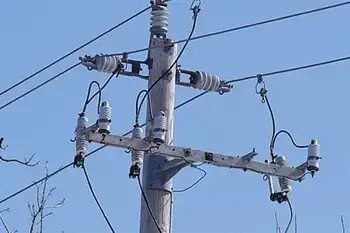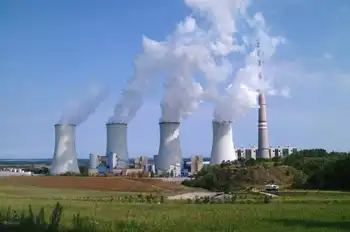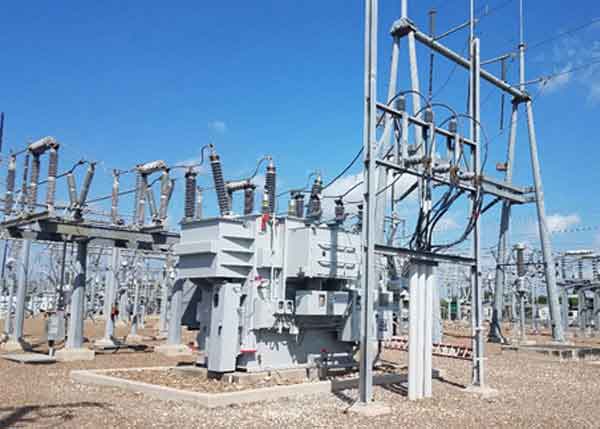Sweden turns to the wind
By New York Times
Arc Flash Training - CSA Z462 Electrical Safety
Our customized live online or in‑person group training can be delivered to your staff at your location.

- Live Online
- 6 hours Instructor-led
- Group Training Available
A 30-mile-an-hour wind was twirling the fingerlike blades of a turbine 380 feet above his head. Around him, a field of turbines rotated in a synchronized ballet that, when fully connected to an electrical grid, would generate enough power to light 60,000 nearby houses.
“We’ve created a new landmark,” said Mr. Floderus, the project manager of the $280 million wind park, one of the world’s largest, which was built by the Swedish power company Vattenfall.
The park, in a shallow sound between Sweden and Denmark, testifies to the remarkable rise of wind energy — no longer a quirky alternative favored by environmentalists in Denmark and Germany, but a mainstream power source used in 26 nations, including the United States.
Yet SwedenÂ’s gleaming wind park is entering service at a time when wind energy is coming under sharper scrutiny, not just from hostile neighbors, who complain that the towers are a blot on the landscape, but from energy experts who question its reliability as a source of power.
For starters, the wind does not blow all the time. When it does, it does not necessarily do so during periods of high demand for electricity. That makes wind a shaky replacement for more dependable, if polluting, energy sources like oil, coal and natural gas. Moreover, to capture the best breezes, wind farms are often built far from where the demand for electricity is highest. The power they generate must then be carried over long distances on high-voltage lines, which in Germany and other countries are strained and prone to breakdowns.
In the United States, one of the areas most suited for wind turbines is the central part of the country, stretching from Texas through the northern Great Plains — far from the coastal population centers that need the most electricity.
In Denmark, which pioneered wind energy in Europe, construction of wind farms has stagnated in recent years. The Danes export much of their wind-generated electricity to Norway and Sweden because it comes in unpredictable surges that often outstrip demand. In 2003, Ireland put a moratorium on connecting wind farms to its electricity grid because of the strains that power surges were putting on the network; it has since begun connecting them again.
In the United States, proposals to build large wind parks in the Atlantic off Long Island and off Cape Cod, Mass., have run into stiff opposition from local residents on aesthetic grounds.
As wind energy has matured as an industry, its image has changed — from a clean, even elegant, alternative to fossil fuels to a renewable energy source with advantages and drawbacks, like any other.
“The environmental benefits of wind are not as great as its champions claim,” said Euan C. Blauvelt, research director of ABS Energy Research, an independent market research firm in London. “You’ve still got to have backup sources of power, like coal-fired plants.”
Mr. Blauvelt publishes an annual report on wind energy in which he discusses its flaws. People in the industry would accuse him of propagating myths, he said. Now, the criticism is more tempered.
“One of the big problems with wind is that people tend to get hyped up about it, very emotional,” Mr. Blauvelt said. “The difference is that the arguments are becoming more rational.”
None of this is to say that wind power has peaked. On the contrary, Mr. Blauvelt figures the industry is adding capacity at a five-year compound annual growth rate of 26.3 percent. That is faster than hydroelectric power in its early days and twice the recent growth rate of nuclear energy.
The United States, which is considered a pioneer in wind, added more generating capacity in 2006 than any year on record. With 11,575 megawatts, the United States is the worldÂ’s third largest wind country, after Germany and Spain, and it is adding more capacity than any other.
Among new countries with significant wind capacity are Britain, Canada, Italy, Japan and the Netherlands.
“What we’re seeing is a second wave of countries, which are starting to invest more heavily,” said Christian Kjaer, the chief executive of the European Wind Energy Association in Brussels.
He said wind energy would benefit from two parallel trends: rising oil prices and a global push to tax carbon-dioxide emissions. “It’s very good way of hedging against volatile oil prices and potentially volatile carbon costs,” Mr. Kjaer said.
In Germany, where 20,000 wind turbines generate 5 percent of the electricity, advocates say wind will be critical to meeting the governmentÂ’s goal of generating at least 20 percent of all power from renewable methods by 2020. But the industryÂ’s growth is slowing for a variety of reasons.
Germany is running out of places to put the turbines because of restrictions on the location and height of the devices. And rising raw material prices are making wind farms more expensive to build.
“Under the current circumstances, Germany’s climate protection targets are not achievable,” said Hermann Albers, the president of the German Wind Energy Association.
Open land is not a problem in the United States, but wind parks have faced resistance, particularly in scenic locales near the shore. A private developer, Cape Wind, wants to erect 130 turbines in Nantucket Sound, off Cape Cod. It has drawn protests from some well-connected locals, including the Kennedy family.
Cape Wind said it hoped to obtain all the necessary permits by next year, which would enable it to be up and running by 2011. “It’s been a long road,” said Mark Rodgers, a spokesman for the developer.
For a socially conscious society like Sweden, wind turbines exert a fashionable appeal.
Today, they account for less than 1 percent of SwedenÂ’s electricity generation. But the government wants to increase annual wind power production to 10 terawatt hours, or 10 trillion watt hours, by 2015 from less than 1 terawatt hour now (the park off Malmo will produce a third of a terawatt hour).
Vattenfall hopes to develop an even larger off-shore park in the Baltic Sea, between Sweden and Germany. In all, the government has identified 49 sites that are suitable for wind parks.
Sweden has historically invested little in wind projects because it has two reliable sources of energy, nuclear and hydro, which each supply roughly half its power. And because hydro is renewable, Sweden already does well on the environmental balance sheet.
But these energy sources have their vulnerabilities: hydro, to low water levels; nuclear, to technical breakdowns. The Swedish government has also pledged not to build any new nuclear power plants.
“One of the key energy priorities for Sweden is to establish a third leg of energy production,” said Anders Nyberg, political adviser in the Ministry of Enterprise, Energy and Communications.
Of course, Sweden does not need to build wind parks to get wind power. It could simply buy more surplus wind power from Denmark, which it uses, as does Norway, to pump underground water into elevated reservoirs. The water is later released during periods of peak electric demand to drive hydroelectric stations.
In this way, hydro acts as a form of storage for wind energy — addressing one of wind power’s biggest shortcomings. Sweden’s strength in hydro makes it a good candidate for greater development of wind power, according to analysts.
Sweden is subsidizing wind power through “green” certificates, which favor the use of renewable energy. The small extra cost is passed on to consumers.
While Swedes staunchly support wind energy, they are as susceptible to the not-in-my-backyard opposition as people elsewhere. For years, residents opposed the wind farm near Malmo, known as Lillgrund, particularly after the builders obtained permission to raise the height of the towers. But the campaign to block the project failed.
Still, Mr. Floderus said the process took far too long, and Vattenfall is urging the government to speed up the approvals next time.
As his inspection ship followed a zigzag course through a field of 48 turbines, Mr. Floderus pointed to MalmoÂ’s two other landmarks, visible in the distance: Oresund Bridge, a 10-mile engineering marvel that connects Malmo with Copenhagen, and the Turning Torso, an eye-popping 54-story skyscraper designed by the Spanish architect Santiago Calatrava.
Soon, Mr. Floderus said, the whirling blades of the Lillgrund wind turbines would take their place alongside those landmarks as symbols of the modern age.











